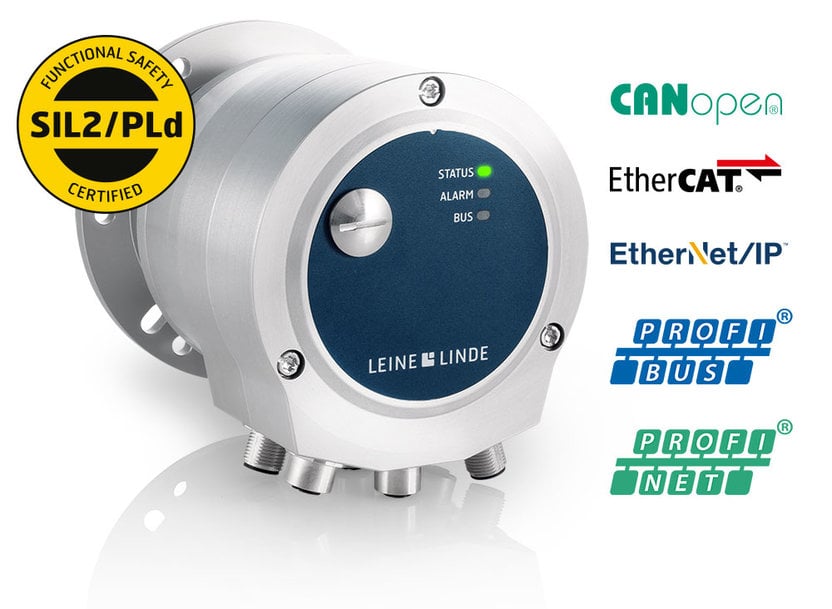www.ptreview.co.uk
11
'21
Written on Modified on
FSI 900 WITH ENDAT FOR VARIOUS FIELDBUS INTERFACES MAKES FUNCTIONAL SAFETY EASY TO ACHIEVE
The Leine Linde FSI 900 encoder series is now equipped with the EnDat interface that can communicate through a variety of fieldbus interface protocols, making it easier than ever to integrate in your control system.

Fieldbus interface protocols
Supplemented by an ERG gateway, the FSI 900 can be used with a variety of communication standards and fieldbus interface protocols, including:
- CANOpen®
- EtherCat®
- EtherNet/IP
- PROFIBUS®
- PROFINET®
Achieve functional safety without complete system redesign
With the FSI 900 you get more than an encoder: Each motor shaft, winch drum, drill, roll drum, wheel or wind turbine where the encoder is installed can be equipped with an independent safety system that fulfils all necessary functional safety requirements. Since
the safety system runs independently from the control system, your central control system will not need a safety certification. You can achieve functional safety and fulfil the requirements of the Machinery Directive without having to replace your existing control system.
Distributed safety reduces the risk of safety errors and improves reaction time
With distributed and independent safety functionality, your functional safety system becomes less vulnerable to design errors, the risk of operational errors is reduced and a failsafe state can be executed directly, without going through a centralized system.
www.leinelinde.com
With the FSI 900 you get more than an encoder: Each motor shaft, winch drum, drill, roll drum, wheel or wind turbine where the encoder is installed can be equipped with an independent safety system that fulfils all necessary functional safety requirements. Since
the safety system runs independently from the control system, your central control system will not need a safety certification. You can achieve functional safety and fulfil the requirements of the Machinery Directive without having to replace your existing control system.
Distributed safety reduces the risk of safety errors and improves reaction time
With distributed and independent safety functionality, your functional safety system becomes less vulnerable to design errors, the risk of operational errors is reduced and a failsafe state can be executed directly, without going through a centralized system.
www.leinelinde.com

